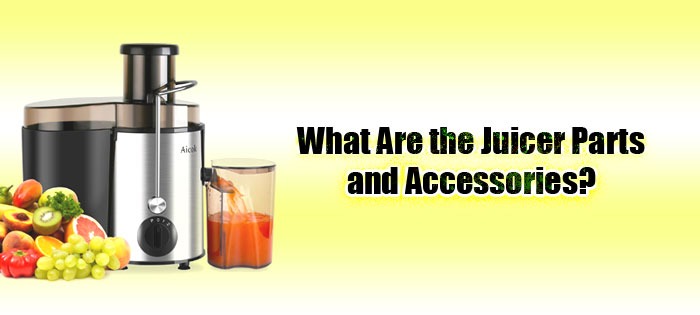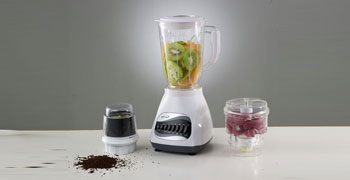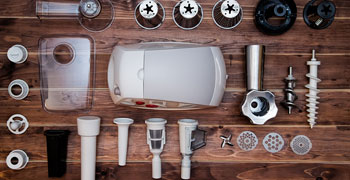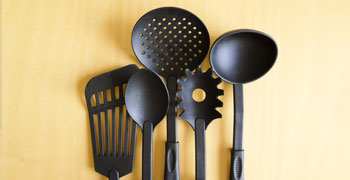Are you into juicing? Or perhaps you’re thinking of buying the best juicer suitable for you to get the most nutrition from your food by absorbing just the juice? Maybe you have health issues or weight loss needs. The juicer could help just anybody to maintain nutrition and help the body absorb more vitamins and minerals.
Also, the juicer works as a handy tool for homeowners who would need help for easy crushing of herbs and spices; extruding pasta, noodles or bread sticks; grinding coffee; making nut milk; making baby food and nut butter, and more.
If you’re a juicer user or a would-be user, you have to get acquainted with its parts and functions so that you can better understand how it works. You also need it for easier assembly and disassembly.
Different types and brands of juicers may have different parts, so you must always refer to the manual to guide you more properly and specifically in assembling and using your juicer. And, Aicok juicers may have some parts that you won’t see in Breville juicers.
 Main body parts
Main body parts
These are what makes up the framework of the juicer, containing some of the most essential parts:
- Motor – the machine which makes the other juicer parts move to perform their functions. It is powered by electricity to create mechanical movements.
- Base housing – provides the body of the juicer. This conceals the motor to make it safer to use the appliance.
- On/off switch – turns juicer on and off. Some juicers have controllers with speed numbers (like in most blenders and electric fans) where you can choose how fast you would like the juicing disc to rotate.
- Power cord – connects the juicer to a power outlet.
- Juice container – this is where the juice – the finished product – would go, ready for drinking. Usually made of glass or transparent plastic materials.
- Pulp container – this is where the pulp would be dispensed. Usually made of stainless steel or plastic materials.
- Latch arms – allows for easy assembly and disassembly of parts.
 Juicing parts
Juicing parts
These are the parts that do the cutting, squeezing, juicing and straining for you.
- Plunger / pusher – pushes the food down. Can be made of plastic or wood.
- Cover – covers the juicer to prevent spilling while food is being juiced.
- Auger – the rotating screw blade that crushes and grinds the food and moves the juice or finished product.
- Receptacle / feeding chute / hopper – this is where you drop fruits and vegetables for juicing. The larger it is, the larger pieces of food you can fit in.
- Bowl / basket – this is where the food is being crushed, squeezed and juiced.
- Strainer / sieve – separates the pulp and other unwanted particles like the fruit/vegetable peel from the juice. It is available in different sizes of holes.
- Cutter blades / grater – chops, cuts and crushes the food for easier juicing.
- Spinning brush – cleans the juicer bowl/basket automatically so that you can easily wash it after use.
- Pulp spout – a funnel that transports pulp and other unwanted particles from the bowl to the pulp container.
- Juice spout – a funnel that transports the juice from the bowl to the juice jug/container.
- Nozzle – allows you to control the pressure applied to the food as it passes through the juicer. The juicer comes with a juicing nozzle, but some offers extra nozzle such as homogenizing nozzle, round noodle nozzle, flat noodle nozzle, bread stick nozzle to shape up noodles and bread into desired shapes.
 Other accessories
Other accessories
- Cleaning brush – usually included in juicer kits for easy cleaning of blades. Some are detachable, so you can find cleaning brush heads and brush handles sold separately.
- Tofu mold – serves as molder for tofu that can be found as a part or an accessory to a slow juicer.
- Twin gear- works like an auger. Usually found in twin gear juicers, which also work as food processor.
- Screen – serves as strainers for some types of juicers, especially the manual juicer, which is attached to the nozzle and near the auger / screw.
- Foam strainer – separates the foam from the juice (some don’t like frothy juices).
Other parts you may find in some specific juicers might not be on this list, but these are the basics. If you are looking for a good juicer, read juicer reviews of the top-rated juicers in the market. It’s better to get one of those juicers with the best reviews, but if you have no budget for them, know their strengths and look for it in other juicers on the market.



 Main body parts
Main body parts Juicing parts
Juicing parts Other accessories
Other accessories